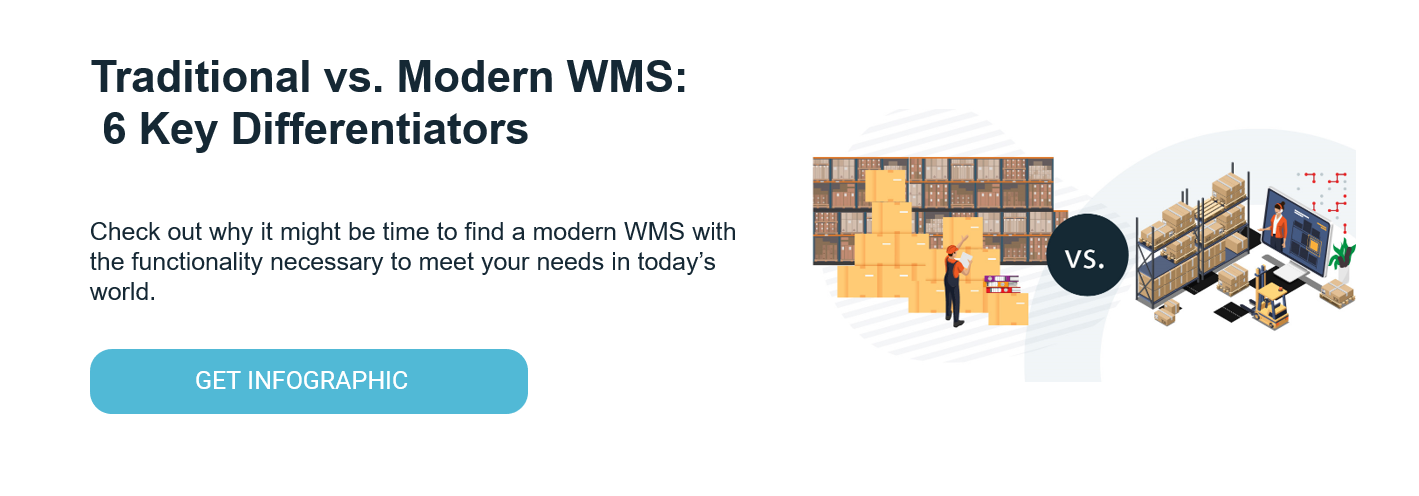Are Warehouse Execution Systems the Next Big Innovation?

I’m seeing a lot of innovation lately in the warehouse execution space and this is leading me to consider if warehouse execution system (WES) technology will create a significant impact on the traditional warehouse management systems (WMS) that are commonly implemented today. However, I thought it would be beneficial to provide an overview of a WES because I’ve noticed there are many misconceptions in this area of supply chain management.
Warehouse Execution Systems Explained
First, let me start with a quick explanation of a WMS. Today, a WMS is largely a system of record — it tracks and records where everything is in the warehouse and reports on the activity done to move things around in the warehouse. It tells the material handlers where to get things or where to put things, but that is generally where the technology ends.
A WES is a system that manages the workflow and optimizes activity in the warehouse — a WES cannot operate without a WMS; it layers on top of the WMS and adds efficiency and direction to the work within the warehouse.
Now, it’s very important to realize that a WES is not a warehouse control system (WCS). A WCS is used to orchestrate the flow of activity for automation and coordinate material handling sub-systems such as conveyor belts, carousels, scales and sorters. A WES can be involved in managing the flow of work inside the automated parts of the warehouse, but a modern WES is far more focused on the human side of the warehouse and managing your material handlers for optimum efficiency.
Warehouse Execution Systems Impact
The easiest way to understand a modern WES is to look at the three areas where a WES is making an impact on traditional WMS processes. Each layer builds on the previous and can be broken down into more detail:
1. Outbound Process Management
The outbound processing of orders in the warehouse takes the most labor and has the most impact on the customer. The key areas during the outbound process that a modern WES manages the activity for are:
- Visibility: Provides a near real-time dashboard of activity within the warehouse, the backlog of activity remaining and highlights possible problems to get the work through.
- Wave and Order Releasing: Handles getting the most important orders assigned to the material handlers in the most efficient way possible.
- Replenishment: Ensures the goods required to pick orders are always available in picking locations and the flow of order picking work is uninterrupted.
- Forward Pick and Dynamic Slot Allocation: Guarantees the pick activity is always at its optimum efficiency and picking space utilization is effective.
- Pick Optimization: Sets system-directed order picking tasks into the most efficient pick cycles and processes based on the priority of orders and the capacity of the warehouse staff at that moment.
2. Task Management
A modern WES analyzes all activity in the warehouse and prioritizes or allocates the activities by the likely impact of performing each individual task. This process can be summarized into two elements:
- Task Prioritization: Understands the true impact of performing each task of moving goods from point A to point B and prioritizes the task to drive the most efficient use of labor, equipment and space while adjusting to changes in backlog, activity, priorities, etc. throughout the day.
- Task Assignment and Management: Ensures all required work is performed by following the prioritization of tasks and driving tasks to workers while managing the task backlog.
3. Automation
Integrating any warehouse automation into the human process side is the third area where a modern WES adds value. This automation can be in many types, but the three most common that WES supports are:
- Automated Storage and Retrieval Systems: Fully automated systems that store and retrieve goods via system direction.
- Conveyors: Managing the flow of goods through the warehouse.
- Bots: Moving goods around the warehouse either autonomously or collaboratively working with material handlers.
What’s Next for Warehouse Execution Systems
Now that you have a stronger idea of a modern WES’ capabilities and where it can improve the WMS process, you might be curious about what’s next for WES?
I believe the WES will next tackle those three common buzzwords — Internet of Things (IoT), artificial intelligence (AI) and machine learning (ML). Imagine a system that tracks everything in the warehouse automatically using IoT, AI and ML. The WES could analyze these results of changes in prioritization and factor in history to drive the most efficient use of all the parts of the warehouse while making recommendations for improvements.
In this instance, a WES could offer you a glimpse into the future of your warehouse and have a massive impact on the amount of work that can get done. More importantly, it would continue to support how your warehouse is organized and managed. It’s the new era of machine intelligence improving warehouse efficiency by the second!




